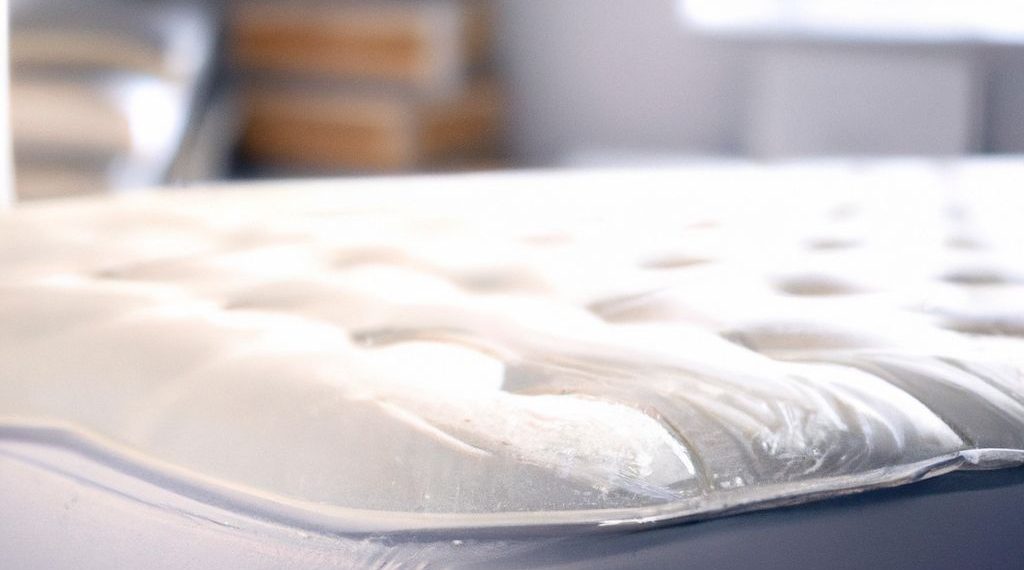Key takeaway:
- Flipping a memory foam mattress can cause potential damage and loss of comfort.
- Rotating the memory foam mattress regularly is a suitable alternative to flipping.
- Proper care for memory foam mattresses includes using a mattress cover, cleaning the mattress, and choosing a supportive bed base.
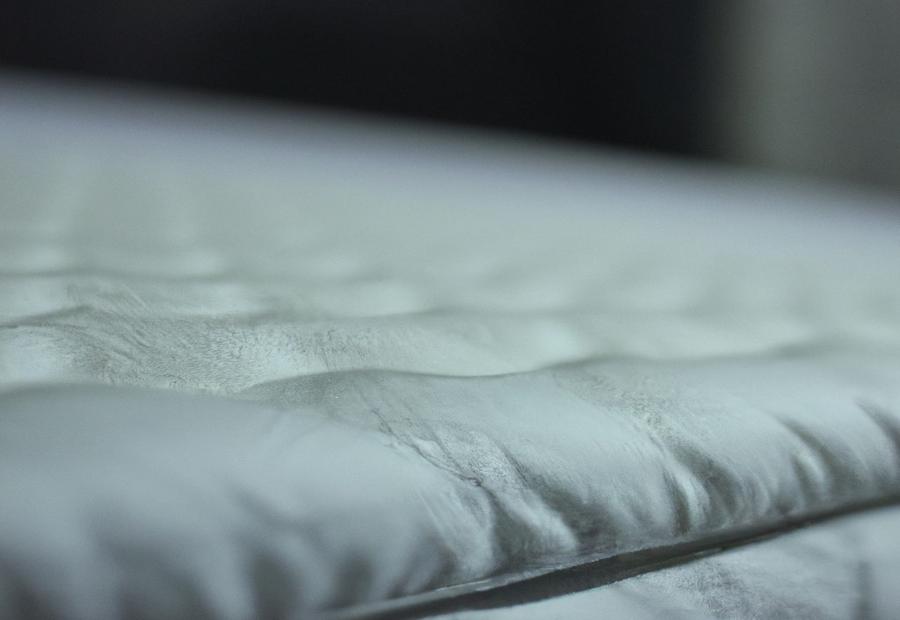
Photo Credits: Www.Mattressreviewguru.Com by Ethan Jackson
Memory foam mattresses have gained immense popularity in recent years, thanks to their unique ability to contour to the body and provide personalized comfort. But what happens if you flip a memory foam mattress? In this section, we will explore the implications and effects of flipping a memory foam mattress, as well as delve into the significance of proper care to maintain its longevity and performance. Get ready to uncover the secrets behind the durability and maintenance of these innovative mattresses.
Explanation of memory foam mattresses
Memory foam mattresses are special! They’re made from a material called memory foam. This material molds to your body, providing custom support and comfort. Pressure points and aches in your shoulders, hips, and back can be relieved by this mattress type. Plus, they reduce motion disturbance between people sleeping on different sides of the bed.
Don’t flip memory foam mattresses like regular spring ones. These have a comfort layer and base layer, so flipping can damage the mattress and ruin its design. It can even make the mattress sag or compress in parts, since weight won’t be evenly distributed.
Flipping isn’t necessary though rotate your mattress every three to six months or when you notice signs of wear or discomfort. Use a mattress cover for extra protection. Vacuum it regularly and spot clean any stains with mild detergent and water. Top it off with a supportive bed base, like a platform or slatted frame, to maximize the mattress’s performance.
Importance of proper care for memory foam mattresses
Proper care for memory foam mattresses is a must. Flipping isn’t recommended, as it can damage the mattress and reduce comfort. Memory foam mattresses have layers that need to stay in order. Flipping disrupts this order and can cause them to lose shape and support over time.
To avoid this, rotate the mattress! Turn it 180 degrees every 3 to 6 months so the head becomes the foot and vice versa. This distributes weight evenly, preventing wear on one side.
Besides rotating, use a mattress cover for protection from spills and stains. Vacuum it regularly and spot clean any stains. Choose a supportive bed base too, for even more longevity.
Careful maintenance will keep your memory foam mattress in top-notch condition and make sure your investment pays off. Don’t miss out!
The Dangers of Flipping a Memory Foam Mattress
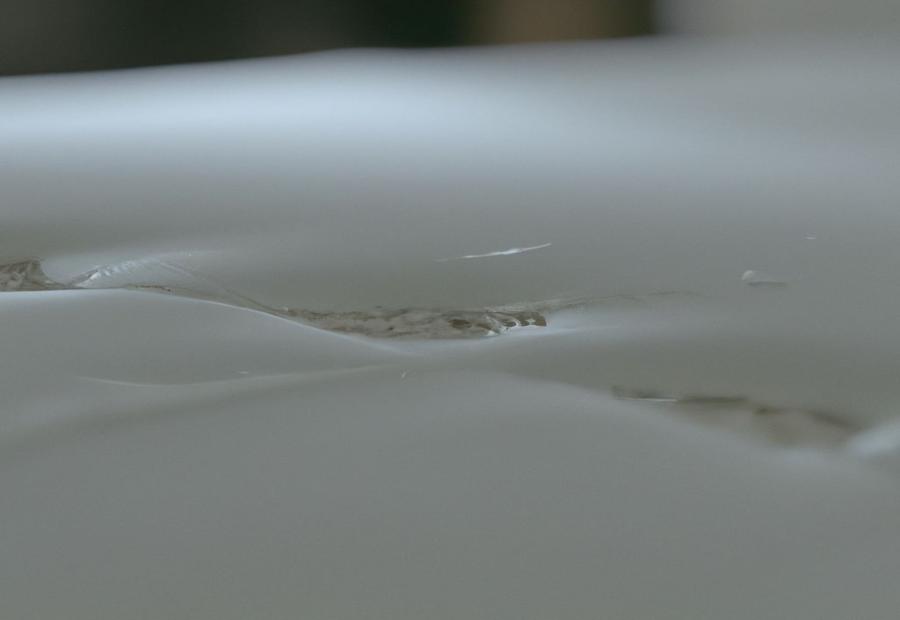
Photo Credits: Www.Mattressreviewguru.Com by Bobby Allen
Flipping a memory foam mattress may seem like a simple task, but it can actually pose serious dangers. In this section, we’ll uncover why memory foam mattresses should not be flipped and explore the potential consequences, including damage to the mattress and a loss of comfort. So, before you decide to give your mattress a flip, it’s crucial to understand the risks involved.
Explanation of why memory foam mattresses should not be flipped
Flipping a memory foam mattress? Don’t do it! It won’t contour to your body and could lead to discomfort. Plus, it can cause damage to the mattress itself. It’s like playing Russian roulette with your spine!
What Do You Put a Memory Foam Mattress on is important to avoid uneven wear and maintain proper support and pressure relief.
So, instead of flipping, rotate the mattress regularly. Turn it 180 degrees so that the head becomes the foot and vice versa. This distributes body weight more evenly.
To keep the mattress in top shape, use a mattress cover and clean it regularly. It’s also important to choose a bed base that provides adequate support.
Flipping a memory foam mattress is bad news. But if you rotate it and maintain it properly, you’ll enjoy a comfortable sleep for longer.
Potential damage to the mattress and loss of comfort
Flipping a memory foam mattress is not recommended. It can cause misalignment of the comfort layers and uneven wear and tear. Plus, it can lead to the loss of its unique contouring properties. To avoid potential damage and maintain comfort, just rotate the mattress 180 degrees. Mark one side with a marker or tag to keep track of the rotations. Cleaning the mattress according to manufacturer guidelines is also a must. So, who needs acrobatics when you can just rotate your memory foam mattress?!
Alternatives to Flipping
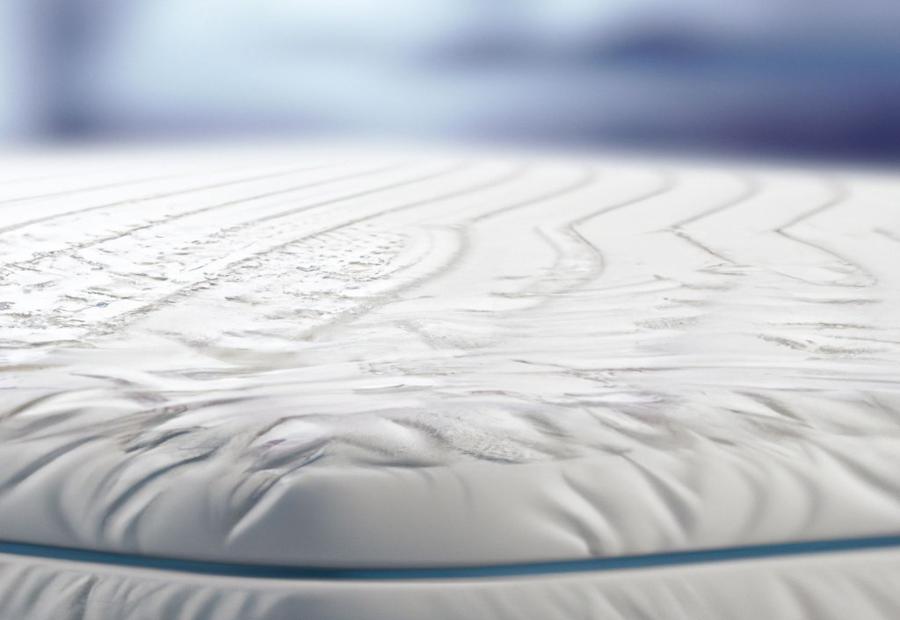
Photo Credits: Www.Mattressreviewguru.Com by Russell Mitchell
Regularly rotating your memory foam mattress can provide a viable alternative to flipping, ensuring optimal longevity and comfort. By exploring the frequency and method of rotation, we can uncover key insights into maintaining the overall quality and performance of your mattress. Let’s delve into the benefits of regularly rotating your memory foam mattress and how this simple practice can contribute to a better sleep experience.
Rotating the memory foam mattress regularly
Rotate, don’t roll! That’s the key to keeping your memory foam mattress in top shape. It’s essential to rotate it regularly. This will help distribute the wear and tear evenly. Therefore, it’ll ensure the prolonged durability and comfort of the mattress.
Frequency and method of rotation
Rotating your memory foam mattress is essential! Doing so, you can evenly distribute the weight and make it last longer, all while ensuring maximum comfort. To rotate your mattress properly, there are specific guidelines to follow.
Every 3 to 6 months, rotate your mattress end-over-end, rotating it 180 degrees. This will help avoid permanent indentations or sagging in certain areas.
In addition to rotation, there are other tips to keep your mattress performing its best. Use a mattress cover to protect the surface from stains and spills, and always clean according to the manufacturer’s instructions. Invest in a supportive bed base that provides adequate support for the mattress too.
To remember when to rotate your mattress, set a reminder on your phone or calendar. This way, you stay consistent and get the most out of your memory foam mattress.
Other Care Tips for Memory Foam Mattresses
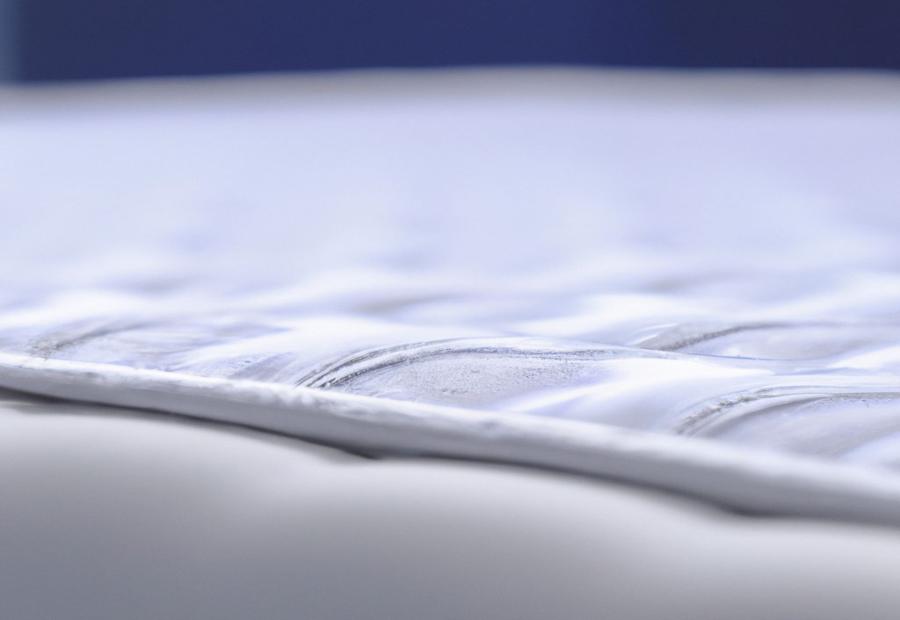
Photo Credits: Www.Mattressreviewguru.Com by Bruce Allen
To maintain the longevity and comfort of your memory foam mattress, there are important care tips to keep in mind. In this section, we will explore various ways to ensure your mattress stays in optimal condition. From using a mattress cover for protection and cleanliness, to cleaning the mattress properly, and even choosing a supportive bed base, we’ll provide you with all the essential information you need to extend the life of your memory foam mattress.
Using a mattress cover for protection and cleanliness
Invest in a mattress cover for your memory foam mattress! It provides protection from spills and stains. Plus, a hypoallergenic cover keeps dust mites and allergens away. Washable covers also promote cleanliness and hygiene. Thus, you can have peace of mind knowing your mattress is clean and protected for years to come.
Cleaning the mattress properly
For cleaning your memory foam mattress, follow these 4 steps:
- Vacuuming: Use a handheld vacuum with a soft brush attachment to remove any debris or particles from the mattress. Focus on seams and crevices.
- Spot Cleaning: If there are stains, mix mild detergent and water. Dampen a clean cloth or sponge in the solution and gently blot the stained area. No vigorous scrubbing!
- Deodorizing: Sprinkle baking soda over the mattress and let it sit for several hours. Vacuum it up with a clean brush attachment.
- Drying: Make sure the mattress is completely dry before covering it or using it. Place it in a well-ventilated area with good air circulation or use a fan.
Plus: Use a waterproof or protective mattress cover that you can easily wash. Avoid exposing your memory foam mattress to moisture or harsh cleaning chemicals. Stick to gentle cleaning methods and regular maintenance.
Choosing a supportive bed base
A supportive bed base is key for keeping the quality and life of a memory foam mattress. It is essential to think of several details when choosing a bed base.
- Firstly, it should spread weight across the mattress to avoid too much pressure on certain areas. This aids with spinal alignment and reduces the risk of having aches or pains.
- Furthermore, a great bed base with enough support avoids the mattress from drooping over time. It offers even support and extends the mattress’s lifetime.
Another important factor to consider is increasing air flow. A permeable bed base enables air to move within the mattress, preventing heat accumulation and moisture build-up. This boosts sleeping comfort and keeps the memory foam mattress cool and fresh. Plus, a strong bed base lowers motion transfer, making sure movements on one side of the mattress do not disrupt a sleeping partner. This helps couples sleep better.
Finally, it is important to choose a bed base that works with the features of memory foam. A supportive bed base is designed to work efficiently with memory foam mattresses, enhancing their unique benefits such as pressure relief and body moulding. Thinking about all these factors when selecting a bed base for your memory foam mattress guarantees you provide ideal support for your mattress while maximizing both its comfort and durability.
Conclusion
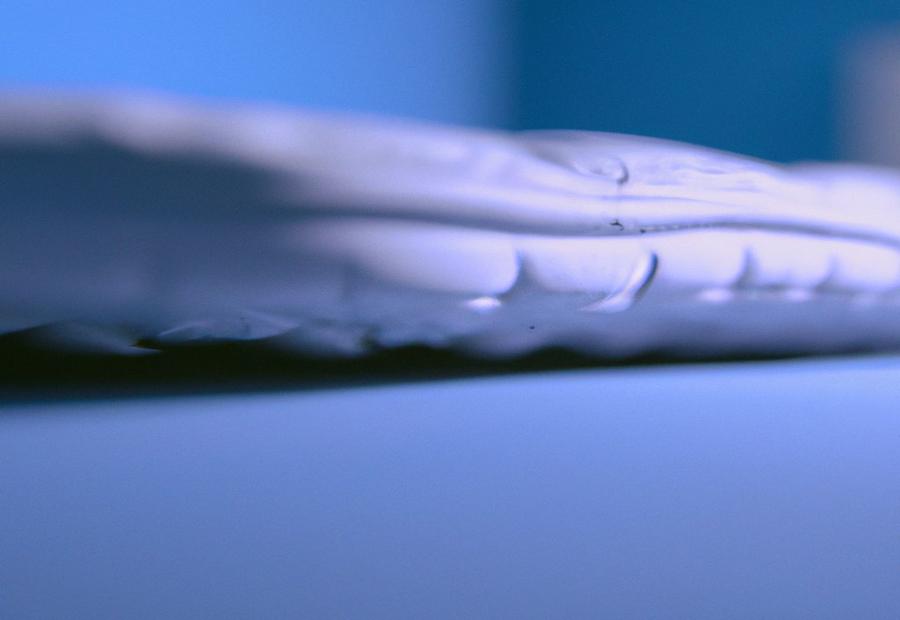
Photo Credits: Www.Mattressreviewguru.Com by Roger Davis
While considering the benefits and drawbacks of memory foam mattresses, let’s now move towards the conclusion of our discussion. In this section, we will recap the significance of not flipping memory foam mattresses and provide a summary of alternative care methods. Stay tuned to discover essential insights about memory foam mattresses!
Recap of the importance of not flipping memory foam mattresses
It is vital to dodge flipping memory foam mattresses, as it can lead to harm and a loss of comfort. Traditional mattresses differ, as they require a particular top and bottom layer for optimal help and pressure relief. Flipping may cause uneven wear and tear. Furthermore, it may harm the foam s structure, which is made of layers that are specifically designed to contour to the body. This could reduce its lifespan.
Rather than flipping, rotating is suggested. This involves turning the mattress 180 degrees to spread weight evenly across it and keep consistent support. Moreover, a waterproof mattress cover is recommended to protect against spills and dust mites. Cleaning it properly is essential too – no harsh chemicals or too much moisture, just vacuuming with an upholstery attachment or mild detergent and water. Lastly, pairing it with a supportive bed base ensures adequate slats or solid support, and prevents sagging in the future.
Summary of alternative care methods for memory foam mattresses
Proper care is essential for memory foam mattresses to retain comfort and longevity. Flipping these mattresses is not recommended due to their special structure, which may cause damage and reduce comfort. Instead, alternative care methods can help keep these mattresses in good condition. Such methods include:
- Rotating the mattress every three months clockwise or counterclockwise by 180 degrees.
- Using a mattress cover for protection and cleanliness.
- Cleaning the mattress as per the manufacturer’s instructions.
- Choosing a supportive bed base.
Also, note that while rotation helps, wear over time due to regular use is inevitable. A breathable mattress protector can add to comfort by managing temperature and moisture. Adopting these alternative care methods will help keep memory foam mattresses in optimal condition without flipping.
Some Facts About What Happens if You Flip a Memory Foam Mattress:
- ✅ Memory foam mattresses should not be flipped as they are designed to be ‘no-turn’ mattresses. (Source: Team Research, Memory Foam Warehouse)
- ✅ Flipping a memory foam mattress would invalidate its features and benefits and make it uncomfortable. (Source: Team Research, Memory Foam Warehouse)
- ✅ Traditional mattresses like innerspring or box spring mattresses can be flipped or rotated occasionally if they are double-sided. (Source: Team Research, Memory Foam Warehouse)
- ✅ Double-sided mattresses should be flipped about twice a year and rotated every three months. (Source: Team Research, Memory Foam Warehouse)
- ✅ Hybrid mattresses, especially those with a soft memory foam pillow top, should not be flipped as it would inverse the design and negate the benefits. (Source: Team Research, Memory Foam Warehouse)
FAQs about What Happens If You Flip A Memory Foam Mattress
What happens if you flip a memory foam mattress?
Flipping a memory foam mattress is not recommended, as it can invalidate the mattress’s features and make it uncomfortable. Memory foam mattresses are designed to be ‘no-turn’ mattresses, with specific layer construction for optimal performance. Flipping the mattress would mean sleeping on the harder base foam, which does not provide enough support.
Can I flip a gel memory foam mattress?
No, flipping a gel memory foam mattress is not recommended. The gel memory foam design in these mattresses is intended to provide specific benefits, and flipping the mattress would negate those benefits. The construction of layers in a gel memory foam mattress includes a knitted cover, a layer of gel memory foam, a layer of sub-memory foam, and a layer of high-density foam as the base. Sleeping on the base foam would result in a less supportive feel.
When should I rotate my memory foam mattress?
Memory foam mattresses should be rotated every three to six months to ensure even wear and prolong their lifespan. Rotating the mattress helps distribute the body’s weight and pressure points, preventing premature damage and reducing the risk of mattress dipping.
How often should I clean my memory foam mattress?
It is recommended to vacuum your memory foam mattress regularly with a soft brush attachment to remove dust and hair. To keep it clean, using a removable mattress cover can help protect it. Some covers have temperature control features for a comfortable sleep. If a liquid is spilled on the mattress, strip the bed and wash the covers. Gently clean the foam with lukewarm soapy water when necessary.
Can I use a memory foam mattress topper on top of my mattress?
Yes, memory foam mattress toppers can be used to enhance the comfort of your existing mattress. However, memory foam mattress toppers should be flipped only once or twice per year and should be professionally cleaned. The entire mattress, including the topper, should be vacuumed regularly to maintain cleanliness.
How long does a memory foam mattress last?
The useful lifespan of a memory foam mattress depends on various factors, such as mattress quality, usage, and maintenance. On average, most mattresses should be replaced every 6 to 8 years. Following proper care and maintenance, including regular rotation and cleaning, can help prolong the lifespan of your memory foam mattress.

